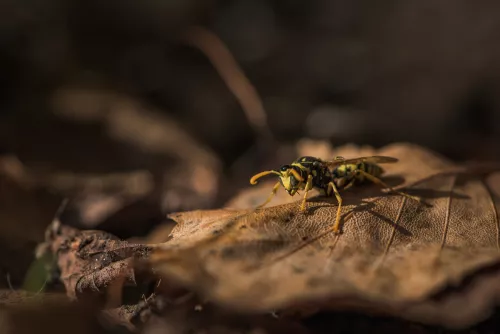The big wasp plague comes - depending on the year sometimes stronger, sometimes weaker - only in late summer. Then they attack us in droves at our outdoor coffee tables with plum cake and Danish pastries. But what actually happens to the tabby insects in autumn?
 In the fall, wasps fly out to breed
In the fall, wasps fly out to breed
The stages of development of a wasp colony
A wasp colony does not last particularly long overall. In the few months of their existence, the animals are basically busy ensuring the survival of their species for the next year. To do this, the following stages are passed through:
- Establishment of the state by the Queen
- Enlargement of the workers' army
- rearing of sex animals
- Death of the animals except for new young queens
Spring Awakening - The Foundation of the State
The wasp queen takes the first stage alone. In the spring she looks for a suitable shelter and creates the first brood chambers for the nest, in which she lays a first round of eggs. She raises the larvae that hatch from them alone.
Breeding an army of women workers
During the later spring and early summer, several more generations of workers are raised - now with the help of the first developed animals.
Late summer - the time of greedy wasp workers
Finally, in late summer, males and young queens are also bred. At that point, the wasp state was buzzing in the truest sense of the word. There is now a lot to do - because both the important sexual animals and the many hard-working workers have to be supplied with enormous amounts of food.
Autumn highlight
In autumn, the most important stage of the entire wasp cycle occurs. Drones and young queens leave the hornet's nest to mate among themselves from state to state. This act of mating outside the nest is called nuptial flight.
When the fertilization of the new young queens has taken place, the aim of all the previous effort has been achieved. The many thousands of workers and also the males have now fulfilled their target and are no longer needed. That means: they die off in the first cold days of autumn. So they have dedicated their entire existence to the preservation of the species for the next year.
The new young queens, i.e. the fertilized females, must now carry out the conservation of the species. They're the only ones who don't die in the fall. During the winter they remain in a state of rigidity in which they hardly use any energy. When spring comes, the whole process starts all over again.